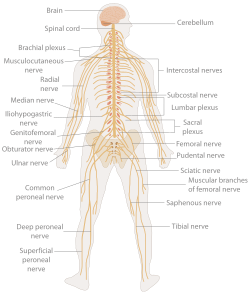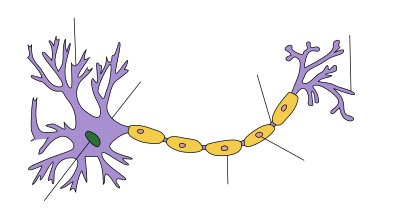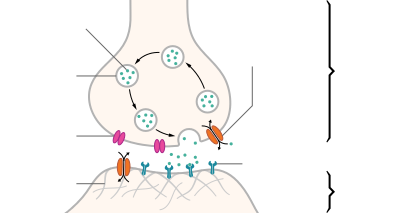Nerve system
| Nervous system | |
|---|---|

The human nervous system.
|
|
| Details | |
| Identifiers | |
| Latin | systema nervosum |
| MeSH | D009420 |
| TA | A14.0.00.000 |
| FMA | 7157 |
|
Anatomical terminology
[]
|
|
| Neuron |
|---|
| Structure of a typical chemical synapse |
|---|
The nervous system is the part of an animal that coordinates its actions by transmitting signals to and from different parts of its body. Nervous tissue first arose in wormlike organisms about 550 to 600 million years ago. In vertebrates it consists of two main parts, the central nervous system (CNS) and the peripheral nervous system (PNS). The CNS consists of the brain and spinal cord. The PNS consists mainly of nerves, which are enclosed bundles of the long fibers or axons, that connect the CNS to every other part of the body. Nerves that transmit signals from the brain are called motor or efferent nerves, while those nerves that transmit information from the body to the CNS are called sensory or afferent. Spinal nerves serve both functions and are called mixed nerves. The PNS is divided into three separate subsystems, the somatic, autonomic, and enteric nervous systems. Somatic nerves mediate voluntary movement. The autonomic nervous system is further subdivided into the sympathetic and the parasympathetic nervous systems. The sympathetic nervous system is activated in cases of emergencies to mobilize energy, while the parasympathetic nervous system is activated when organisms are in a relaxed state. The enteric nervous system functions to control the gastrointestinal system. Both autonomic and enteric nervous systems function involuntarily. Nerves that exit from the cranium are called cranial nerves while those exiting from the spinal cord are called spinal nerves.
...
Wikipedia


